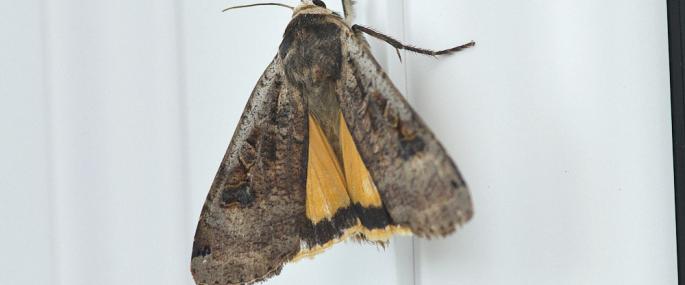The Large Yellow Underwing is a very common, large, brown moth, with orangey-yellow hindwings bordered with black. It holds its wings folded back, flat along the body, and scuttles about on the floor like a mouse. Adults fly from June right through to November, and often come to lights at night. They rest during the day, but will flash their bright hindwings if disturbed, designed to surprise and scare-off predators. The caterpillars feed on a wide range of plants, including grasses and Dock leaves, and hibernate over winter. It is found almost everywhere.
Moths such as the Large Yellow Underwing are common in gardens - why not set up a moth trap at night and see who comes to visit? To attract moths and butterflies into your garden, plant nectar-rich borders and shrubs for them to feed on. To find out more about encouraging wildlife into your garden, visit our Wild About Gardens website: a joint initiative with the RHS, there's plenty of facts and tips to get you started.
